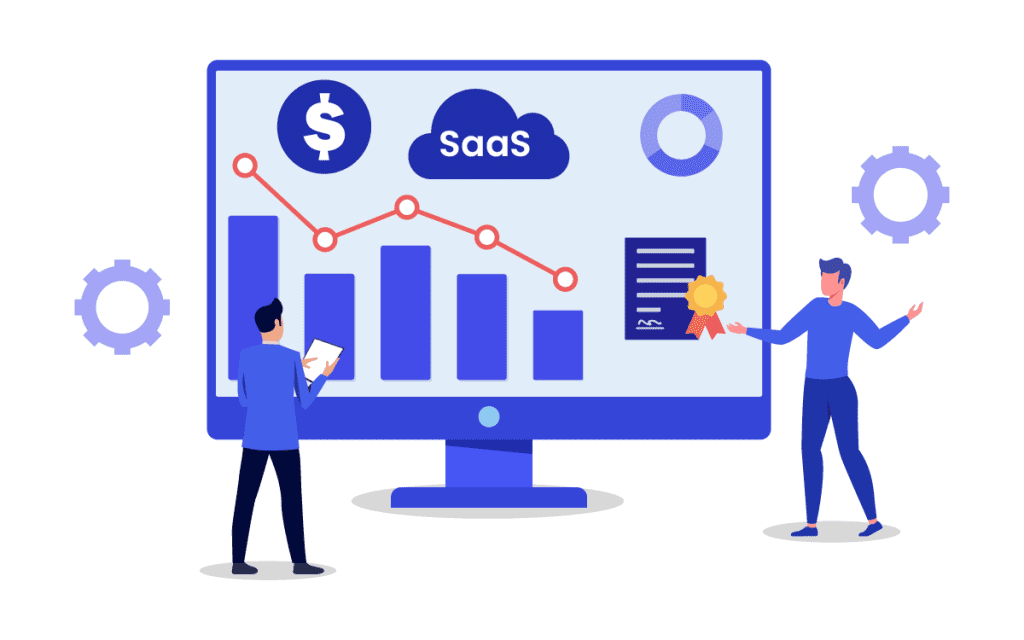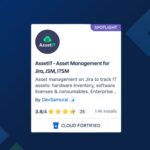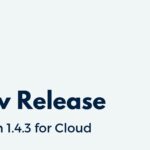SaaS license management, a part of IT Asset Management (ITAM), focuses on organizing, managing, and controlling cloud-based programs. It provides inventory, tracking, analysis, and control for all applications.
Companies’ digital spaces have undergone dramatic transformations recently. Cloud computing and Software as a Service (SaaS) are two of the most prominent advances or changes. SaaS allows firms to offer Cloud-based programs accessed via the Internet rather than installing and supporting hardware and software. Over the past few years, SaaS has become more popular for customers and an excellent way for companies to create remote workplaces.
Despite the advantages of acquiring and utilizing SaaS, managing SaaS can present numerous challenges. Managers must keep business and client data secure, keep SaaS spend low, adhere to compliance laws and policies, and ensure software matches customer and employee needs. Fortunately, they do not have to perform all these tasks manually. They can take advantage of SaaS license management applications. Find out all about what SaaS license management is and how excellent management software benefits companies.
Table of Contents
- What is SaaS License Management?
- How Can SaaS License Management Software Benefit Companies?
- 1. Tracking Usage and Costs
- 2. Recording All Streams of Data
- 3. Identifying Unused Programs
- 4. Finding Underused Applications
- 5. Discovering Shadow IT
- 6. Solving Compliance Issues
- 7. Monitoring Different Pricing Models
- 8. Updating SaaS License On-Time
- 9. Choosing the Best Software
- 10. Onboarding and Offboarding SaaS License and Authorization
What is SaaS License Management?
Cloud-based applications and SaaS programs are excellent ways to upgrade your firm, improve productivity, enhance efficiency, and increase customer satisfaction. However, without proper SaaS license management, companies place all these benefits on the line and open the door to serious challenges and risks. SaaS license management, a part of IT Asset Management (ITAM), focuses on organizing, managing, and controlling cloud-based programs. It provides inventory, tracking, analysis, and control for all applications.
How Does SaaS License Differ from Traditional Ownership?
Traditional software ownership requires companies to buy, install, manage, and maintain applications and programs. Saas licensing is a much more convenient and cheaper option for most firms. Rather than purchasing ownership, they purchase access to the software on a regular basis. Since this is the case, they are not responsible for the upkeep of the programs. However, they do have to track and manage them properly to ensure usability and efficiency.
How Can SaaS License Management Software Benefit Companies?
Software ownership may be complex and expensive, but SaaS license management can also come with its own set of challenges. Fortunately, specially-designed SaaS license management software can increase visibility, keep track of relevant information, indicate problem points, and help determine solutions. The top benefits include:
1. Tracking Usage and Costs
Balancing usage with spending can be difficult, but it is impossible if there are no accurate, up-to-date records of either metric. Proper SaaS license management allows for past and present records, and future estimates, of these important elements.
2. Recording All Streams of Data
Many streams of data go into effective SaaS license management, such that firms have the most accurate snapshot possible of their IT assets. If they can find all the relevant data in one single source of truth, they can make powerful insights about their business.
3. Identifying Unused Programs
Many companies have unused SaaS applications, whether they acquire software that does not fit their needs or gradually garner less and less use-value. When they cannot properly track usage, they continue to support unused programs. Effectively, they waste space and financial resources. SaaS license management software can keep track of usage, so that management can make informed decisions about current applications and future investments.
4. Finding Underused Applications
In some cases, employees or clients may use SaaS applications but may not take advantage of all the available features. In manual processes, it can be hard to uncover this information. However, appropriate usage tracking allows for unique discoveries. Firms can downgrade subscriptions or limit user numbers to optimize spending.
5. Discovering Shadow IT
If managing departments do not have full visibility of their SaaS applications and other IT assets, they risk shadow IT. Shadow IT is the unauthorized or unapproved use of software or hardware, increasing risks for data breaches and cyberattacks. Digital SaaS management allows for the monitoring and control of all IT assets. It also facilitates changing authorizations and accesses to reduce or eliminate Shadow IT.
6. Solving Compliance Issues
It is critical to abide by compliance regulations for safety, security, and financial responsibility. If companies do not remain up-to-date on compliance, they take on unnecessary risks, large fines, and potential business operation stalls or shut-downs. With proper license management software, IT teams can evaluate and monitor SaaS applications. They can easily identify any problems or risks associated with compliance rules and cyber security.
7. Monitoring Different Pricing Models
SaaS licenses have different pricing models, depending on the provider. They may have flat, tiered, pay-per-use, pay-per-user, or pay-per-extra-feature (freemium) rates. If all SaaS applications do not follow the same model, it can be incredibly difficult to manage those costs, optimize spending, or make fluctuating payments on time. Accurate inventory and financial tracking allows you to keep a watchful eye on all spending.
8. Updating SaaS License On-Time
It is unlikely that companies acquire all their SaaS licenses at the same time. Since this is the case, updates and renewals do not all occur simultaneously. Automated SaaS license management software can remind firms when renewals are approaching. In this way, they will have time to review all relevant data and decide if they wish to keep the software, negotiate a better price, upgrade a subscription, or cancel a subscription.
9. Choosing the Best Software
Companies can make amazing strides when they have all the necessary information. Management programs track and record data, such that you can generate comprehensive reports whenever you need to make a critical decision. It will help make better choices about software that matches company needs, employee tasks, and customer desires. Likewise, firms can eliminate acquiring irrelevant programs or software with overlapping features.
10. Onboarding and Offboarding SaaS License and Authorization
SaaS authorizations and licenses must be promptly given to new employees, updated for role changes or transfers, and revoked for leaves. The onboarding and offboarding processes can be frustrating, especially if it is handled independently for every employee. Additionally, it provides room for errors or neglect. With a SaaS license management application, the process is simple and easy. Grant authorizations from day one, change them quickly, or revoke access upon leaving dates.
This Ebook provides a comprehensive overview of IT Asset Management, its benefits, and common challenges faced by organizations. We will also explore how to implement IT Asset Management using Jira, a popular project management tool, and best practices for managing IT assets.
Looking for an ITAM tool for your organization? Check this out: Asset Management for Jira – JSM, ITSM













Recent Comments